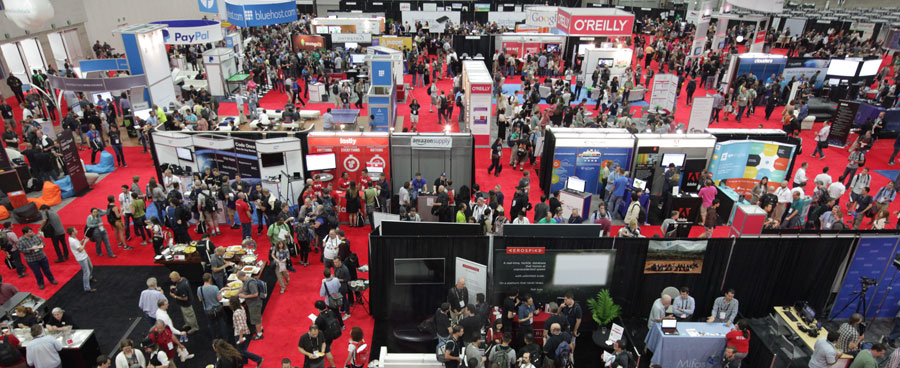
Worship maintainers
The future is maintenance: build for the inevitable.

Technology has had a cult of newness for centuries. We hail innovators, cheer change, and fend off critics who might think new and change are coming too fast. Unfortunately, while that drives the cycle of creation, it also creates biases that damage what we create, reducing the benefits and increasing the costs.
Formerly new things rapidly become ordinary “plumbing,” while maintenance becomes a cost center, something to complain about. “Green fields” and startups look ever more attractive because they offer opportunities to start fresh, with minimal connections to past technology decisions.
The problem, though, is that most of these new things — the ones that succeed enough to stay around — have a long maintenance cycle ahead of them. As Axel Rauschmayer put it:
“People who maintain stuff are the unsung heroes of software development.”
In a different context, Steve Hendricks of Historic Doors pointed out that:
“Low maintenance is the holy grail of our culture. We’ve gone so far that we’re willing to throw things away rather than fix them.”
That gets especially expensive. Heaping praise on the creators of new things while trying to minimize the costs of the maintainers is a recipe for disaster over the long term.
Read more…

The magic design sauce: curiosity and serendipity
Khoi Vinh on "How They Got There," the cards interaction model, and designers as founders.

I recently sat down with Khoi Vinh, vice president of user experience at Wildcard and co-founder of Kidpost. Previously, Vinh was co-founder and CEO of Mixel (acquired by Etsy, Inc.), design director of The New York Times Online, and co-founder of the design studio Behavior, LLC. Our conversation included a discussion of career paths; the much talked about new interaction model, cards; and advice for design entrepreneurs.
Curiosity serves designers well
Vinh and I discussed the ever-evolving role of designers. He recently self-published How They Got There, a book of interviews with interaction designers who describe their career paths and offer advice and insight. Vinh explained:
“How They Got There is kind of like the book I wish I could have read when I was just starting out in my career. The central thesis is that very few careers are truly planned out, A to B, to C, to Z, and it’s usually a lot of stuff that just happens by circumstance or blind luck, or through someone who knows someone.
“As I became more and more aware of that in my career, I started to find those stories really interesting, really revealing, because they say so much about the character of people who achieve notoriety in their careers; the circumstances that led them to where they are can be fascinating. In a lot of instances, the things that get these people onto these paths are very, very minor events or minor coincidences. … There’s a serendipity, but I think, one thing that comes out when you read these stories is what serves these designers really well is curiosity, a willingness to be available to opportunities, so to speak. They go with the flow. They let one thing turn into another through their ability to acclimate themselves to various situations.
“What’s that old saying from Branch Rickey — “luck is the residue of design”? These careers are somewhat serendipitous, but they are really the result of folks who are very conscientious about making the most of whatever situation they had and working really hard and applying themselves, and looking at the world around them with great curiosity and being really willing to study what it takes to get to the next level.”

Full-stack tensions on the Web
How much do you need to know?
 I expected that CSSDevConf would be primarily a show about front-end work, focused on work in clients and specifically in browsers. I kept running into conversations, though, about the challenges of moving between the front and back end, the client and the server side. Some were from developers suddenly told that they had to become “full-stack developers” covering the whole spectrum, while others were from front-end engineers suddenly finding a flood of back-end developers tinkering with the client side of their applications. “Full-stack” isn’t always a cheerful story.
I expected that CSSDevConf would be primarily a show about front-end work, focused on work in clients and specifically in browsers. I kept running into conversations, though, about the challenges of moving between the front and back end, the client and the server side. Some were from developers suddenly told that they had to become “full-stack developers” covering the whole spectrum, while others were from front-end engineers suddenly finding a flood of back-end developers tinkering with the client side of their applications. “Full-stack” isn’t always a cheerful story.
In the early days of the Web, “full-stack” was normal. While there were certainly people who focused on running web servers or designing sites as beautiful as the technology would allow, there were lots of webmasters who knew how to design a site, write HTML, manage a server, and maybe write some CGI code for early applications.
Formal separation of concerns among HTML, CSS, and JavaScript made it easier to share responsibilities among specialists. As the dot-com boom proceeded, specialization accelerated, with dedicated designers, programmers, and sysadmins coming to the work. Perhaps there were too many titles.
Even as the bust set in, specialization remained the trend because Web projects — especially on the server side — had grown far more complicated. They weren’t just a server and a few scripts, but a complete stack, including templates, logic, and usually a database. Whether you preferred the LAMP stack, a Microsoft ASP stack, or perhaps Java servlets and JSP, the server side rapidly became its own complex arena. Intranet development in particular exploded as a way to build server-based applications that could (cheaply) connect data sources to users on multiple platforms. Writing web apps was faster and cheaper than writing desktop apps, with more tolerance for platform variation.
Read more…

Public vs. private cloud: Price isn’t enough
The risk relative to the savings isn’t enough to justify a shift to public cloud.

This post was originally published on Limn This. The lightly edited version that follows is republished with permission.
Last October, Simon Wardley and I stood on a rainy sidewalk at 28th St. in New York City arguing politely (he’s British) about the future of cloud adoption. He argued, rightly, that the cost advantages from scale would be overwhelming compared to home-brew private clouds. He went on to argue, less certainly in my view, that this would lead inevitably to their wholesale and deep adoption across the enterprise market.
I think Simon bases his argument on something like the rational economic man theory of the enterprise. Or, more specifically, the rational economic chief financial officer (CFO). If the costs of a service provider are destined to be lower than the costs of internally operated alternatives, and your CFO is rational (most tend to be), then the conclusion is foregone.
And, of course, costs are going down just as they are predicted to. Look at this post by Avi Deitcher: Does Amazon’s Web Services Pricing Follow Moore’s Law? I think the question posed in the title has a fairly obvious answer. No. Services aren’t just silicon; they include all manner of linear terms, like labor, so the price decreases will almost certainly be slower than Moore’s Law, but his analysis of the costs of a modestly-sized AWS solution and in-house competition is really useful.
Not only is AWS’ price dropping fast (56% in three years), but it’s significantly cheaper than building and operating a platform in house. Avi does the math for 600 instances over three years and finds that the cost for AWS would be $1.1 million (I don’t think this number considers out-year price decreases) versus $2.3 million for DIY. Your mileage might vary, but these numbers are a nice starting point for further discussion.
These results raise an interesting question: if the numbers are so compelling, why did Walmart just reveal that they are building a ginormous private cloud? Why would anyone? Read more…

Pandora’s box model
An experiment in containing stylesheet complexity.
This post is part of my personal notes about the benefits currently specified in Shadow DOM, but contentious and held up in committee. We’ll work it out in standards, I’m sure — but given the number of things Shadow DOM was addressing, it may still be several years until we have solutions widely implemented and deployed that solve all of them. This has me doing a lot of thought exercises about what can be done in the meantime. The following reflects one such exercise: specifically, what would it mean to solve just the styling end of this on its own. Warning: it may be mildly crazy.

The Pandora Box
CSS works really well if you can follow good patterns and have nice rich markup. It lets you define broad rules and inherit and override selectively, and if used well it cleanly decouples a separation of concerns — it’s pretty elegant actually.
On the other hand, in the real world, things are often not that simple: until pretty recently, HTML wasn’t especially expressive natively, so we worked around it — many times on our own by adding classes like “article.” But, there wasn’t a standard. Likewise, our ideas about the patterns we should follow or best practices continues to change as we gain new powers or spend more time with the technology. Of course, there are a vast number of cases where you’ll just go and upgrade your philosophy and be the better for it, but there are a number of times when this just isn’t an option. This is sometimes referred to in standards circles, less colorfully, as “the composition problem.”
When it comes to these sorts of cases, quality and philosophy are inevitably mixed and not entirely in the control of any one team. In these sorts of cases, CSS selectors are kind of like live hand grenades, it’s just way too easy to do damage you didn’t intend to do because it requires a level of coordination of approach which is, for business reasons, highly impractical. And so you try really hard to analyze the problem, get the right select/cascade/descend/inherit/specificity, pull the pin, lob it into the pages and… hope. Frequently, all hell breaks loose. The more you mix it up, the harder it gets to reason about and the more our stylesheets explode in complexity. You’ve opened the proverbial Pandora’s Box.

